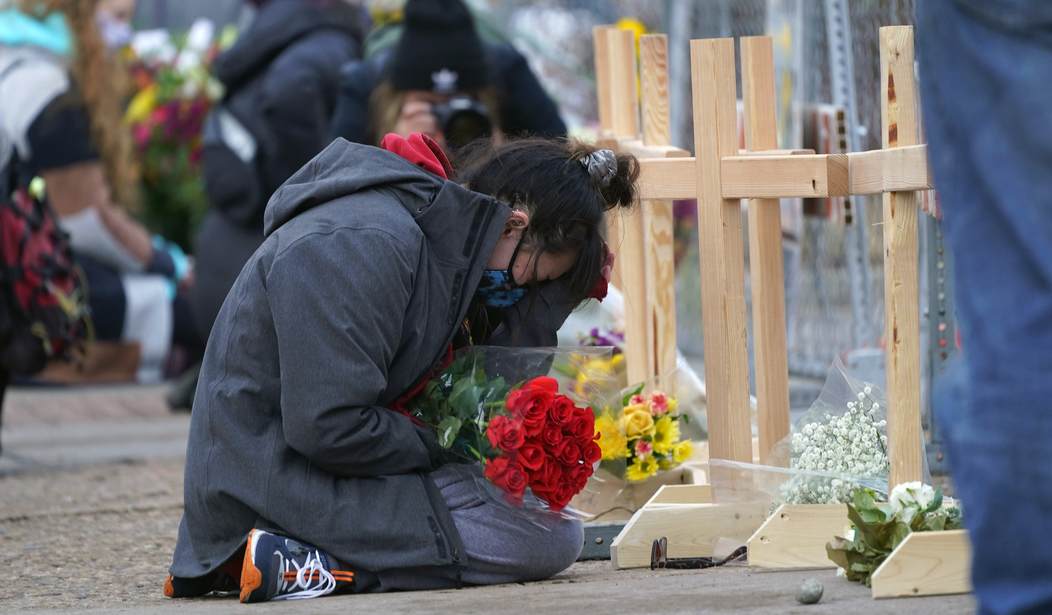Over and over again, we’ve seen the stories. Headlines claim repeatedly that there have been hundreds and hundreds of mass shootings so far this year. To hear them tell it, anyway.
Those of us who understand where they get their numbers, however, are skeptical. We know the books are cooked in a lot of ways.
Now, an FBI report on mass shootings shows just how badly those numbers are manipulated.
The FBI found that while active shootings are increasing, they are not nearly the threat the Gun Violence Archive and the media would have you believe.
Here’s a breakdown of the FBI’s data for “active” shootings over the past five years:
- 2016: 20
- 2017: 31
- 2018: 30
- 2019: 30
- 2020: 40
Here’s the number of “mass” shootings for the same timeframe from the Gun Violence Archive:
- 2016: 382
- 2017: 346
- 2018: 337
- 2019: 417
- 2020: No data posted
That’s a huge difference that likely won’t make a lot of sense to many Americans. How can the numbers the media use be so different than the numbers the FBI uses?
The problem, as noted by Armed America News reporter Lee Williams, is that Gun Violence Archive simply uses very different definitions.
According to their new report titled: “Active Shooter Incidents in the United States in 2020,” the FBI defines active shootings as:
- Shootings in public places
- Shootings occurring at more than one location
- Shootings where the shooter’s actions were not the result of another criminal act
- Shootings resulting in a mass killing
- Shootings indicating apparent spontaneity by the shooter
- Shootings where the shooter appeared to methodically search for potential victims
- Shootings that appeared focused on injury to people, not buildings or objects
Shootings were excluded from the FBI’s list if they were the result of:
- Self-defense
- Gang violence
- Drug violence
- Contained residential or domestic disputes
- Controlled barricade/hostage situations
- Crossfire as a byproduct of another ongoing criminal act
- An action that appeared not to have put other people in peril
By comparison, the Gun Violence Archive, or GVA, excludes nothing, even if the shooting is gang or drug related – the two main causes of most violence in the country today.
Also as noted, most Americans think of mass shootings as those covered by the FBI’s definition, not the Gun Violence Archive’s definition. While many media reports do, eventually, give that definition, that’s after the terrifying headlines and early paragraphs about how horrible the problem is.
Further, most people still don’t differentiate that the FBI’s definition and Gun Violence Archive’s definitions are that different.
The thing is, they’re different on purpose. Gun Violence Archive’s definition is, at least in my opinion, purposefully constructed to include as many shootings as humanly possible so as to inflate the number of mass shootings. They know that mass shootings are scary to the American public. If people are scared enough, they’ll back gun control.
So, they try to scare them.
However, as we can see, the FBI definition–one that covers the kinds of shootings people think of when they hear the term “mass shooting”–winnows those down to a mere handful every year. That’s bad for gun control advocates because it means the problem isn’t really as big as they’ve made it out to be.
That’s not to say mass shootings shouldn’t be addressed. We should definitely figure out why these happen and what we can do to prevent them. That doesn’t mean gun control, though. There are better ways to handle those kinds of things.
But for people like the folks at Gun Violence Archive, there aren’t, which is why they keep inflating mass shooting numbers.







Join the conversation as a VIP Member